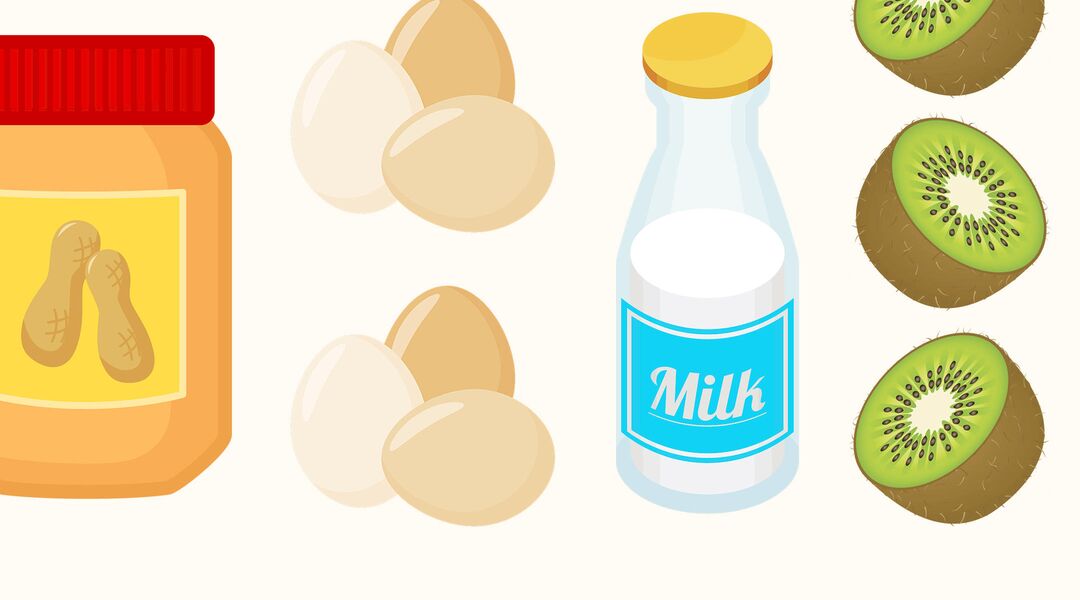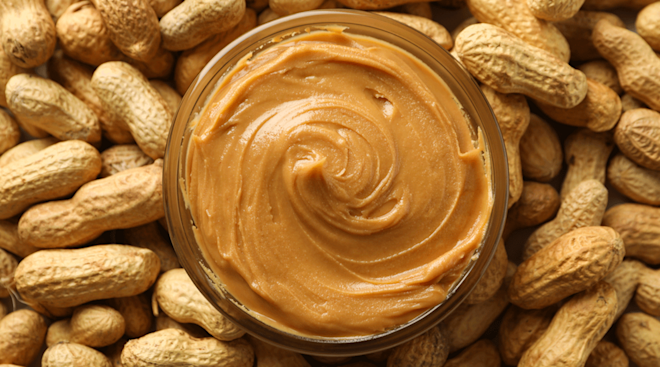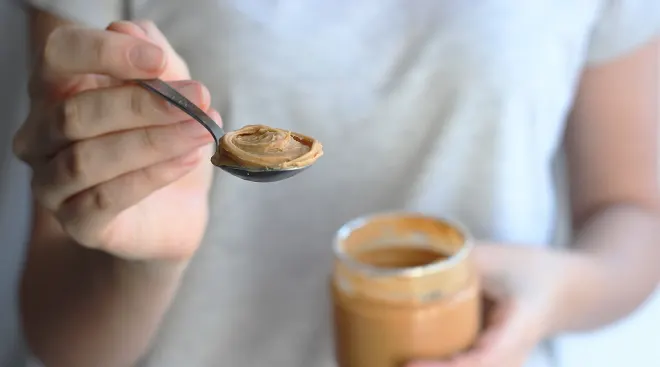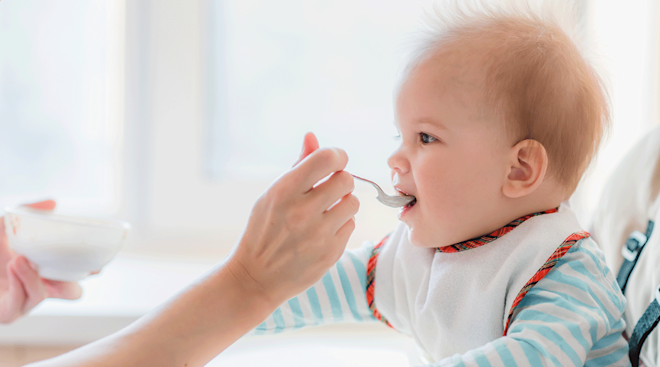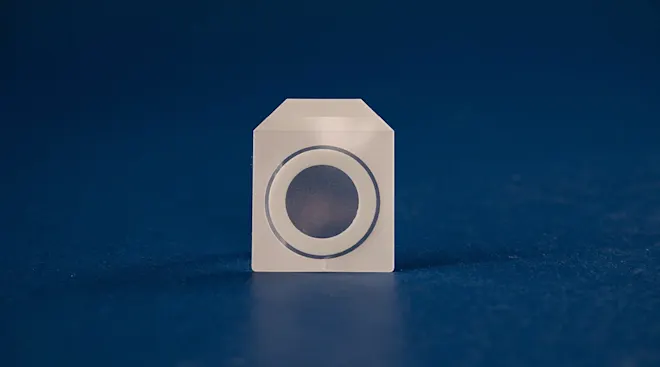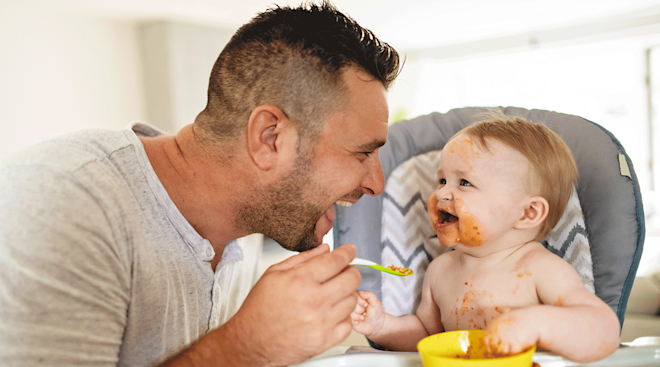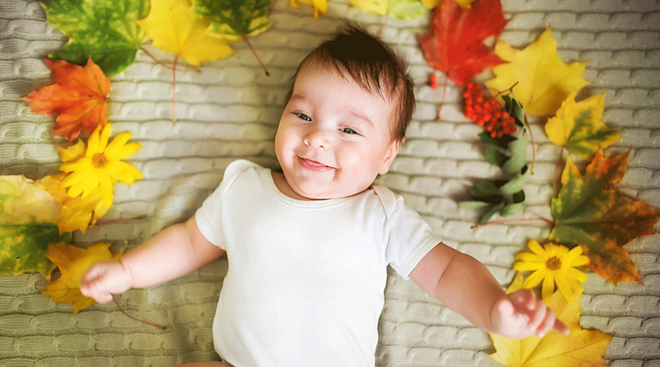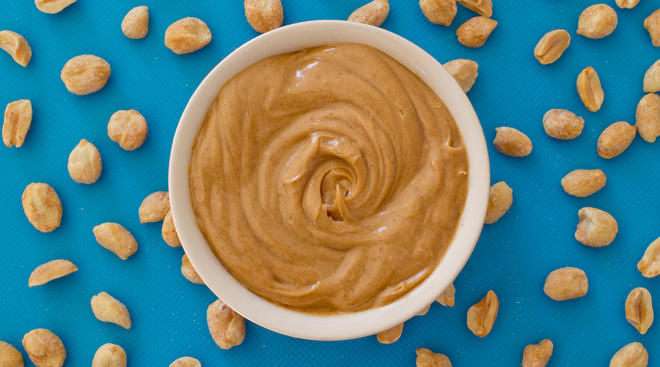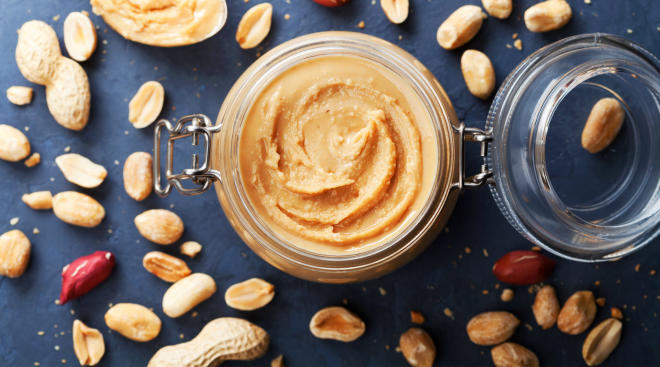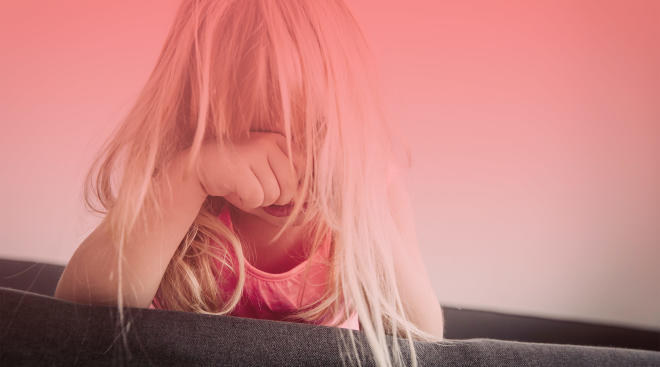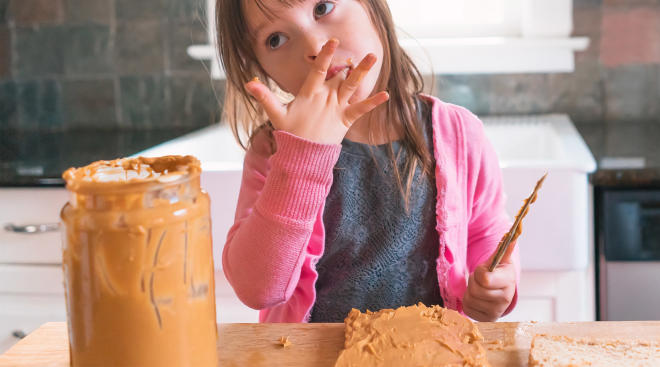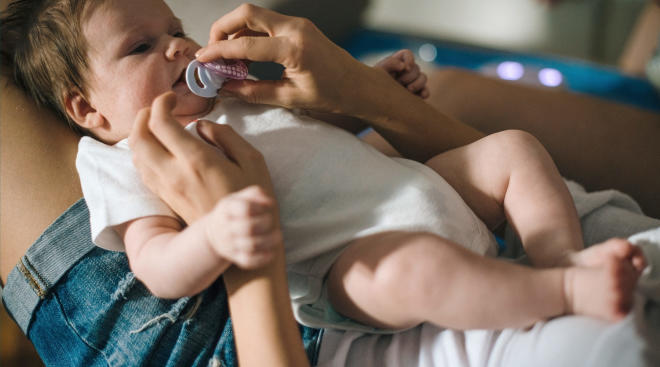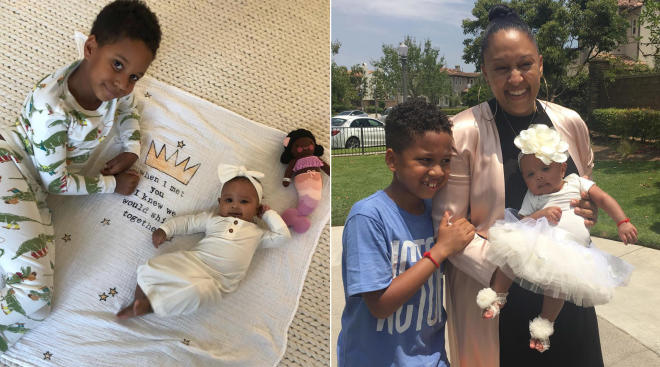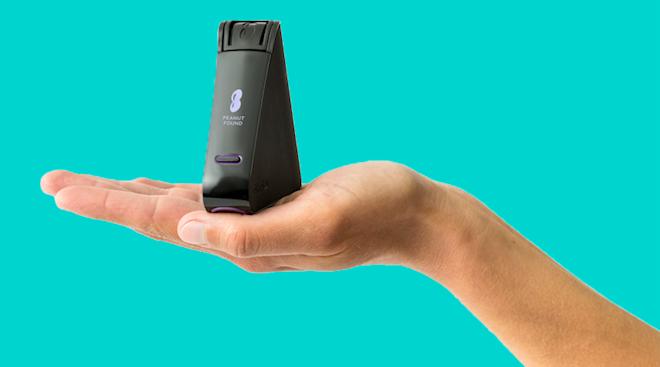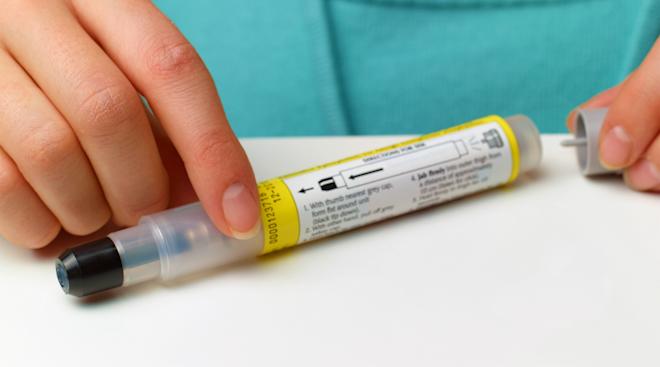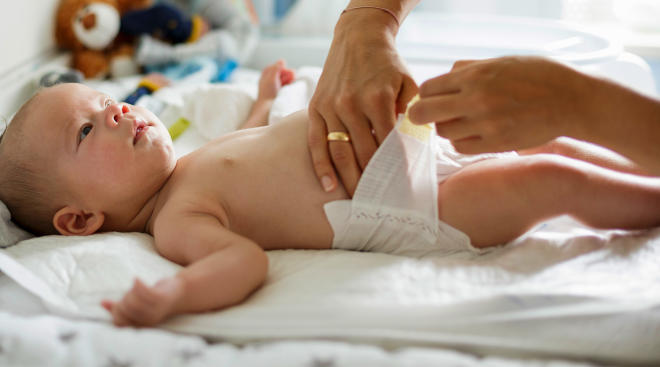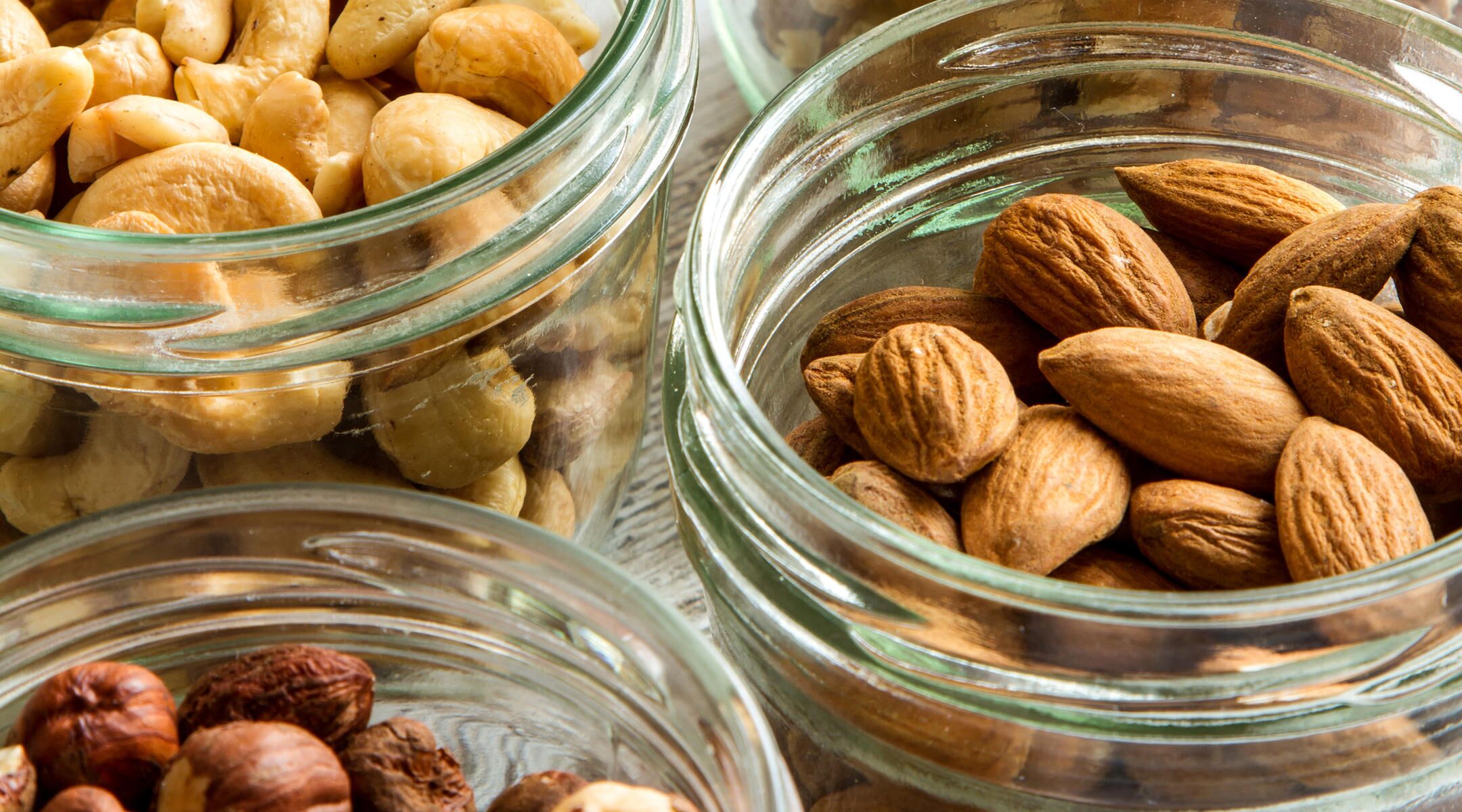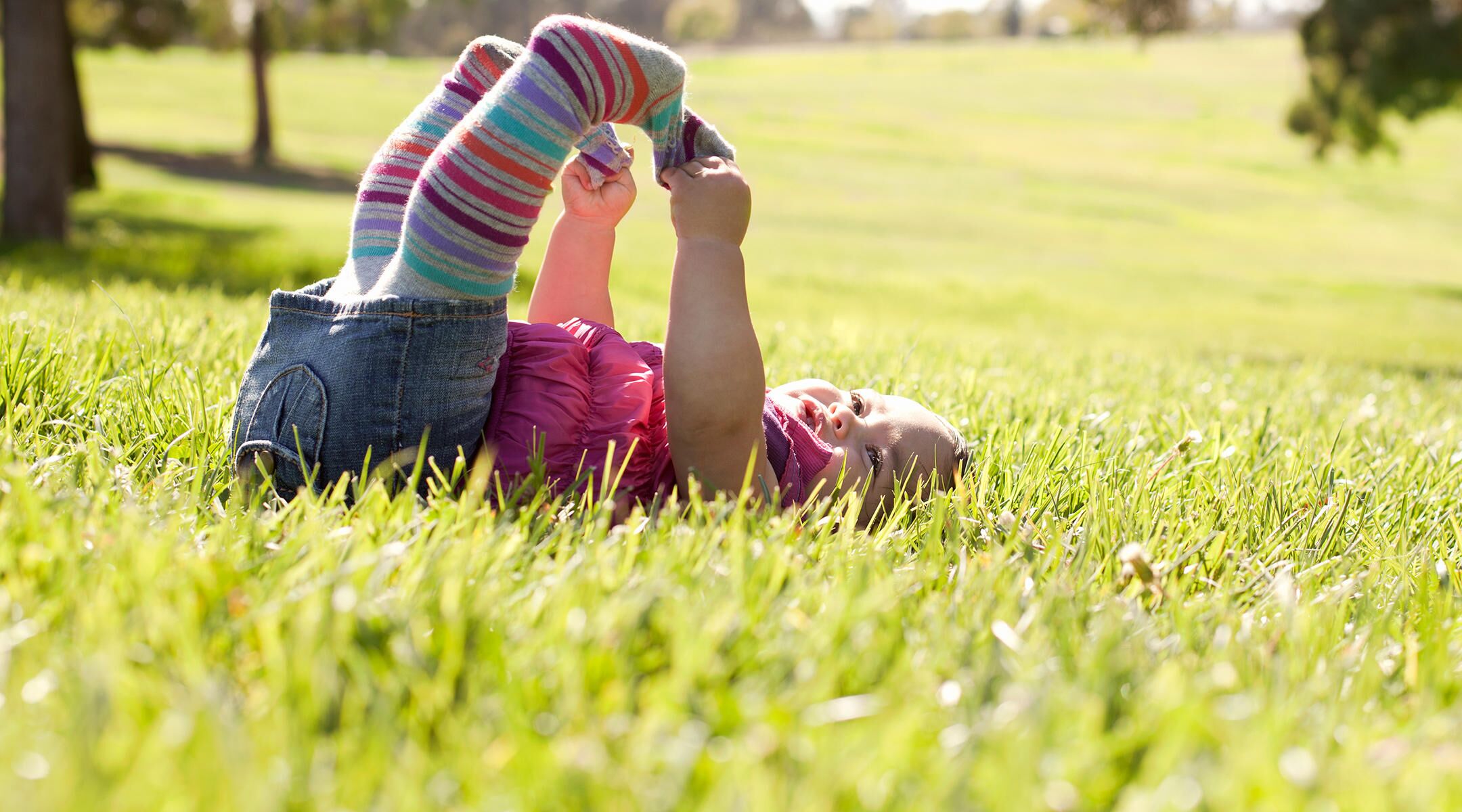Baby Allergies: a Primer on What You Need to Know
Whether your child spits up after a feeding, breaks out in a rash or develops a drippy nose and red eyes, baby allergies can be scary for any parent to witness. Add to that the possibility of anaphylactic shock in the most serious of baby allergies cases, and it can be downright dangerous. But don’t stress: Our primer on how to spot symptoms of a baby allergic reaction, plus prevention strategies and home remedies, will put your mind at ease and help keep baby safe.
The short answer is yes. But what causes infants to develop baby allergies is still something of a mystery. Doctors do know that what determines why some people develop allergies while others don’t comes down to a “combination of environment and genetics and the interplay with the allergic immune system,” says Sujan Patel, MD, a pediatric allergist at Hassenfeld Children’s Hospital at NYU Langone in New York City. And while there’s no way to predict which allergies your child might develop, some pre-existing conditions may make infant allergies more likely. According to the American Academy of Allergy, Asthma & Immunology (AAAAI), babies with a sibling or parent who has allergies is at a higher risk for developing an allergy. Infants who have asthma or eczema may also be more likely to have allergies.
While food allergies are likely top of mind for parents, there are actually several different kinds of baby allergies out there that may present themselves at different times of baby’s life. “In general, food allergies [which can occur even when trace elements are ingested through breast milk] develop within the first few months of life,” Patel says. But seasonal allergies, for example, are rare in infants, since babies’ immune systems are still developing and they likely have limited exposure to the allergen (like pollen). “Year-round allergies to environmental presences, such as dust mites or pets, can occur within the first year of life, and seasonal allergies within the second and third year of life,” he says.
If you’re concerned, either because of your child’s genetic background or because of some symptoms you’ve spotted, speak with your pediatrician, who can discuss next steps and potential treatment.
While the telltale signs of allergies in babies differ depending on the kind of allergy your child is experiencing, all allergies are simply the body’s immune system going into overdrive in response to a foreign element it considers hostile. So when baby’s body is exposed to the allergen (aka the trigger substance), it produces an antibody called IgE that affects the organ systems, prompting symptoms ranging from itchy, watery eyes and sneezing (if it’s an airborne allergen) to a bellyache (like with some food allergies) and potentially even anaphylaxis, a severe reaction that causes the body to go into shock and can be life-threatening.
Baby may not have a noticeable reaction the first time she’s exposed to the allergen, but she could have a more serious reaction the second or third time she comes into contact with it, since many baby allergies develop over time.
“In general, symptoms will typically occur within the first two hours of consumption,” says Patel, who advises parents to have an antihistamine on hand just in case they do see a reaction. (Children’s Benadryl is safe for toddlers 2 and up, so talk with your pediatrician about the right type of antihistamine and dosage for your child.)
It’s not always easy to pinpoint symptoms of allergies in babies to a tee, but allergic reactions are usually related to the organ system being affected: For example, food allergies may affect the gastrointestinal system and result in diarrhea, while environmental allergies may affect the respiratory system and cause baby to start wheezing. Here are some general signs of a baby allergic reaction:
• Rashes, hives, itchy skin and swelling. “Typically, food-related allergic reactions start with skin [issues] such as hives—red, raised blotches on the skin, often around the mouth and neck,” Patel says. Pay careful attention in the first few hours after baby is offered a new food; if you notice redness around her mouth or lips, contact your pediatrician immediately.
• Vomiting or diarrhea. Food allergies also affect the gastrointestinal system, so baby could have nausea, vomiting or diarrhea if he’s allergic to something he ate.
• Runny nose, red eyes or wheezing. In general, environmental, airborne allergies, such as mold and pollen allergies, typically affect the respiratory system, so baby may have a runny nose or difficulty breathing. If your child ever develops a rapid, weak pulse, shortness of breath or difficulty breathing after exposure to an allergen, seek medical help immediately, as it could be a sign of anaphylaxis.
Note baby’s symptoms and share them with your pediatrician, even if they seem like no big deal, since allergies may get worse over time.
Does it seem like every other friend you know has a child with some sort of allergy, yet you practically grew up on PB&J sandwiches and remember idyllic summers rolling in grass, ragweed and pollen without a care in the world? It’s not your imagination. Baby allergies are actually much more prevalent today than they were 100—or even 30—years ago. It’s estimated that 8.4 percent of US children under the age of 18 suffer from hay fever, 12.0 percent from skin allergies, 10 percent from respiratory allergies and 5.7 percent from food allergies, according to the US Centers for Disease Control and Prevention (CDC).
While every child is different, there are certain allergens—whether it’s food, animals, medicines or airborne irritants—that are more likely to cause problems than others. Here’s a closer look at those common baby allergies:
Common food allergies in babies
If baby has a reaction to eating certain foods, you may naturally suspect a food allergy. But only 6 percent of babies have true food allergies—others may have food sensitivities, a reaction that doesn’t produce IgE antibodies but still may manifest in symptoms like rashes, vomiting or general fussiness. You can sometimes suss out food sensitivities and allergies even before baby takes his first bite, since infants can develop allergies through trace amounts of food found in breast milk. So how can you tell if baby has a sensitivity or allergy? Diarrhea, bloody stool, colic, eczema, constipation or vomiting may be a sign your breastfed baby is allergic to something you’re eating.
The following foods are the most common culprits behind allergic reactions in both babies who are breastfeeding and babies who are beginning to eat table food.
• Eggs. Parents who have a child with an egg allergy should regularly check labels, since eggs can appear in unlikely places, even the flu shot, so when it’s time for vaccinations, talk to your pediatrician about alternatives.
• Cow’s milk or dairy. Dairy allergies in infants are not uncommon and often manifest first as a sensitivity to breast milk or formula. If baby seems allergic to formula, it may be because it’s cow-milk based. “My son had a bottle of formula at 4 months and started violently puking two hours later. I was terrified,” says Melissa, mom of a 2-year-old. “I wondered if it was the formula, but my doctor brushed it off, since he had been fed some from birth. Two weeks later, it happened again. This time, the doctor listened to me and tested his stool for blood. It tested positive and I switched to a hypoallergenic formula.”
• Peanuts. A peanut allergy can be life-threatening, but waiting too long to introduce peanuts to baby could actually increase the likelihood of baby developing an allergy or sensitivity to a nut. “We encourage early introduction of most foods now to avoid developing allergies,” says Purvi Parikh, an allergist and immunologist with the Allergy & Asthma Network, a nonprofit focused on allergy education and advocacy. If your family has a history of allergies, talk with your pediatrician. She may suggest a contact test (where you put a small dab of peanut butter on your child’s skin) to diagnose a peanut allergy.
• Tree nuts. An allergy to tree nuts, including pine nuts, almonds, cashews, chestnuts and walnuts, is different than a peanut allergy, since a peanut is a legume that grows from the ground. A child who has a peanut allergy may not have a problem with tree nuts, and vice versa. Still, both allergies can be incredibly serious. Some research has shown that eating peanuts and tree nuts while pregnant may reduce the chance of baby developing the allergy.
• Wheat or gluten. Some children may have a wheat or gluten intolerance (gluten is the proteins found in wheat, barley and other grains). Most children are diagnosed with a wheat or gluten intolerance between 6 months to 2 years of age and may display symptoms such as decreased appetite, bloating, crankiness or weight loss.
• Soy. This is one of the most common food allergens for young kids, and it can often be found in infant formulas and many other processed foods. Allergic reactions usually first surface in children under 3, but most of them grow out of the allergy by age 10.
• Fruits. Strawberry, kiwi, oranges and other fruits may manifest in a diaper rash, but experts say that may not be a full-blown allergy. Although rare, citrus fruits may cause some sensitivity in infants, even if they’re eaten by mom while she’s breastfeeding. While baby’s reaction may not be an allergic one, it’s worth discussing with your pediatrician and discontinuing the food.
Unless your child’s doctor advises you not to offer baby one of these foods (for example, if you have a family history of allergies), it’s smart to introduce these foods early and keep a careful watch for any signs of a potential allergic reaction. Doctors used to recommend waiting until your child was older (over 9 months or one year) to introduce common allergens, such as wheat or peanuts, but there’s no solid evidence that this approach works to prevent allergies. Instead, some research seems to suggest that introducing small amounts of potentially allergenic food early on in a child’s life can help prevent food allergies. Talk to your pediatrician about when and how to introduce your little one to new foods.
Other common baby allergies
From pollen to bugs, pets and medications, baby allergies can run the gamut. Here, some other common allergens.
• Pollen. Kids tend to develop environmental allergies after age 2. Itchy eyes, a runny nose (the color of the mucus doesn’t matter) and wheezing are all common symptoms of these allergies.
• Insects. Beestings and bug bites can be painful and itchy, but such a response in baby isn’t necessarily an allergic reaction. While an allergist will be able to pinpoint whether it’s an allergy or sensitivity, parents should be on the lookout for telltale symptoms of baby allergies: extreme swelling, a breakout of hives beyond the insect bite or difficulty breathing, Parikh says. Stinging insects may cause these reactions; other insects, like cockroaches or dust mites, may cause respiratory symptoms, like sneezing and itchy eyes, that are similar to what you might see from a pollen or environmental allergy.
• Pets and pet dander. Some studies suggest babies who grow up around pets are less likely to develop a pet allergy, but if you see troubling symptoms—including watery eyes, a cough, runny nose or a skin reaction—talk with your pediatrician about causes and treatment.
• Sunscreen, detergent and other topical allergens. Baby allergies to lotions, laundry detergent and other allergens that touch the skin may manifest in a rash or hives. If you see this, stop using the product and bring it up with your pediatrician.
• Penicillin. Babies can be allergic to penicillin, but a negative reaction is more likely to be due to a sensitivity. According to a 2010 review of studies, a true penicillin allergy in infants is very rare. Allergy testing is required to determine whether it’s an allergy or a sensitivity; if you suspect an issue, consult with your pediatrician.
Baby allergy testing
So how do you know for sure if baby has allergies? Baby allergies are diagnosed by either a blood test that measures IgE (the antibody that spikes when an allergen is introduced) or a skin prick test. “Typically in a skin prick test, an extract of the suspected allergen is introduced into the superficial skin with a toothpick-like device, and results are available in 15 to 20 minutes,” Patel says. “The procedure is typically well tolerated and doesn’t produce any bleeding.” Both types of tests should be performed by a board-certified allergist.
For more minor baby allergies, including seasonal allergies, a pediatrician may decide not to do further testing and advise you to simply avoid the allergen when possible and concentrate on easing baby’s symptoms.
Here’s the good news: Even if your child is diagnosed with baby allergies, they may not last a lifetime. “Allergies to foods such as egg, wheat and dairy tend to be outgrown by kindergarten age,” Patel says. “The chance of your child outgrowing her peanut allergy is about 20 percent, and an 8 percent chance for outgrowing a tree nut allergy. Environmental allergies tend to persist into adulthood and may decrease when a person is in their 40s.”
In the meantime, though, here’s how can you provide some baby allergy relief.
• Partner with your allergist. A pediatric allergist will know the latest treatments, protocols and medication recommendations. If you suspect your child has baby allergies, ask your pediatrician for a referral to an allergist.
• Offer medicine to ease the symptoms. An antihistamine can control the itching, hives and runny nose that go hand-in-hand with certain environmental allergies. Your child’s doctor may also prescribe daily medications to control allergy symptoms. Immunotherapy, or “allergy shots” that expose your child to small amounts of the allergen in an attempt to build up an immunity, can also be helpful.
• Practice avoidance. Avoiding trigger substances should be the cornerstone of your baby allergies management plan. That may mean switching to a hypoallergenic laundry soap or keeping peanuts out of the house—and instructing grandparents and child care providers to do the same.
• Have an emergency plan. If baby has a severe, life-threatening allergy, you may need to keep an EpiPen (an injector filled with a dose of epinephrine) with you at all times. Make sure all of baby’s caregivers know how to spot the symptoms of anaphylaxis and how to use the EpiPen when needed.
Home remedies for baby allergies
If baby has minor allergies, such as seasonal allergies or an allergy to dust, there are ways to help relieve the discomfort on your own. In addition to discussing the problem with your pediatrician, consider trying some of these tried-and-true home remedies for baby allergies:
• Go hypoallergenic. Babies who have a dust mite or dander sensitivity may benefit from hypoallergenic bedding.
• Keep your home clean. Remove carpets, keep pets out of baby’s bedroom, vacuum the house frequently with a HEPA filter, wash bedding in hot water once a week and be sure all vents are free of dust and mold, Parikh says.
• Don’t track the outdoors inside. Pollen can’t be avoided, but removing baby’s outdoor clothes and giving him a bath after going to the park or playing outside can be helpful, Parikh says.
• Get an air purifier. “My son has been rubbing his eyes, coughing and is congested. Our pediatrician said it’s definitely possible my son has an environmental allergy. We put an air purifier in our son’s room, and we change the air filters often, which helps,” one mom says. Experts say an air purifier can’t filter out pollen (the particles are too small) but it can help filter pet dander and mold.
• Run a humidifier. “My daughter has been congested and sneezy for almost three weeks now. I took her to the pediatrician this week, and he gave her a thorough examination and determined that she has allergies,” another mom says. “We run the humidifier all night and use saline and the bulb syringe to clean out her nose.” While the humidifier won’t do anything for allergies themselves, it can help relieve baby’s symptoms, Parikh says. Just keep the humidifier clean so it doesn’t grow mold, which can make allergy symptoms even worse.
Updated September 2017
Please note: The Bump and the materials and information it contains are not intended to, and do not constitute, medical or other health advice or diagnosis and should not be used as such. You should always consult with a qualified physician or health professional about your specific circumstances.
Navigate forward to interact with the calendar and select a date. Press the question mark key to get the keyboard shortcuts for changing dates.
































